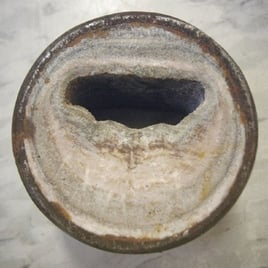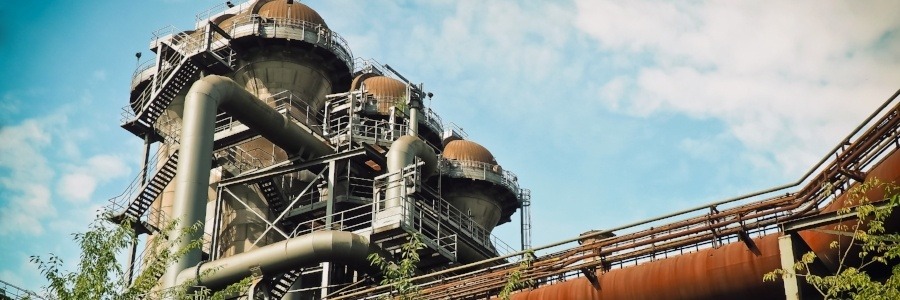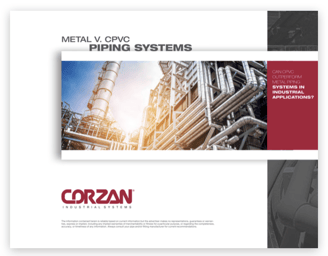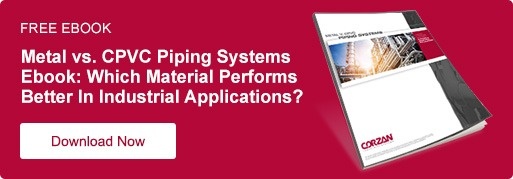THE PROVEN WAY TO PREVENT SCALING IN INDUSTRIAL PIPING SYSTEMS
This post is an excerpt from our resource article, “Metal v. CPVC Piping Systems — Can CPVC outperform metal piping in industrial applications?”
For demanding industrial applications, metal piping materials, such as carbon steel or stainless steel, are the traditional choice. However, with the significant threat scaling poses to metals in industrial applications, should it continue to be?
If your plant exclusively considers metal piping materials, viable alternatives are being overlooked. Chlorinated polyvinyl chloride (CPVC) piping systems present significant advantages to metal in environments prone to scaling.
Learn more scaling in metal and CPVC piping systems below.
What is Scaling and What Are the Related Consequences?

Scaling, which is a buildup of ions around the interior walls, is a significant threat to industrial piping. Over time, this build up constricts the diameter of the pipe, choking off the flow.
Scaling can cause your system to experience several detrimental side effects, such as:
- Loss in pump efficiency.
- Pressure increase within the system.
- Scales can flake off and clog up filters or contaminate the fluid itself.
What Causes Scaling In the First Place?
At certain pH levels and temperature ranges, different metal ions are soluble, allowing them to flow through piping systems with little to no problem.
However, if the fluid a metal is dissolved in falls outside of its solubility range, ions can drop out of the solution and attach to the walls of a metal pipe. These ions build up over time to create what look like scales around the inside of the pipe.
Processes that involve magnesium, calcium, iron, aluminum and silica tend to be at higher risk of scaling. Calcium, for example, has a very narrow range of solubility, creating a huge propensity to drop out of a solution and thus attach to the walls of a metal pipe.
The Role of Installation in Preventing Scaling
Scaling tends to occur where there is eddying in the flow. Eddies can be found near imperfections in the pipe, such as around seams and flanges. As the fluid swirls around these eddies, a concentration of ions develops, increasing the likelihood of scaling.
To help limit the chance of scaling, specialized welding techniques and equipment are required. These highly skilled, experience laborers can create smooth metal piping seam welds. However, their talents are in high demand, and consequently can prove costly.
Even so, perfect seam welds won’t resolve the scaling issue. Metal piping will always be at risk of scale buildup where fluids collect or slow down within the system.
Choose CPVC To Prevent Scaling Concerns
With CPVC there is no concern of scaling. The elements within the thermoplastic material simply do not attract the metal ions, keeping the interior of the pipe free of build up.
To prevent flow rate concerns, pump costs and costly piping repairs, consider the performance of CPVC, the reliable industrial piping material.
Metal v. CPVC Piping Systems: Want to Learn More?
CPVC piping may be impervious to scaling while metal piping is not, but how do they compare in other key categories? Check out our Metal v. CPVC Piping Systems resource page to see how the two materials compare when it comes to temperature, pressure, scaling, installed cost, lifecycle value and more. Or you can download the full article in a PDF by clicking the button below.



